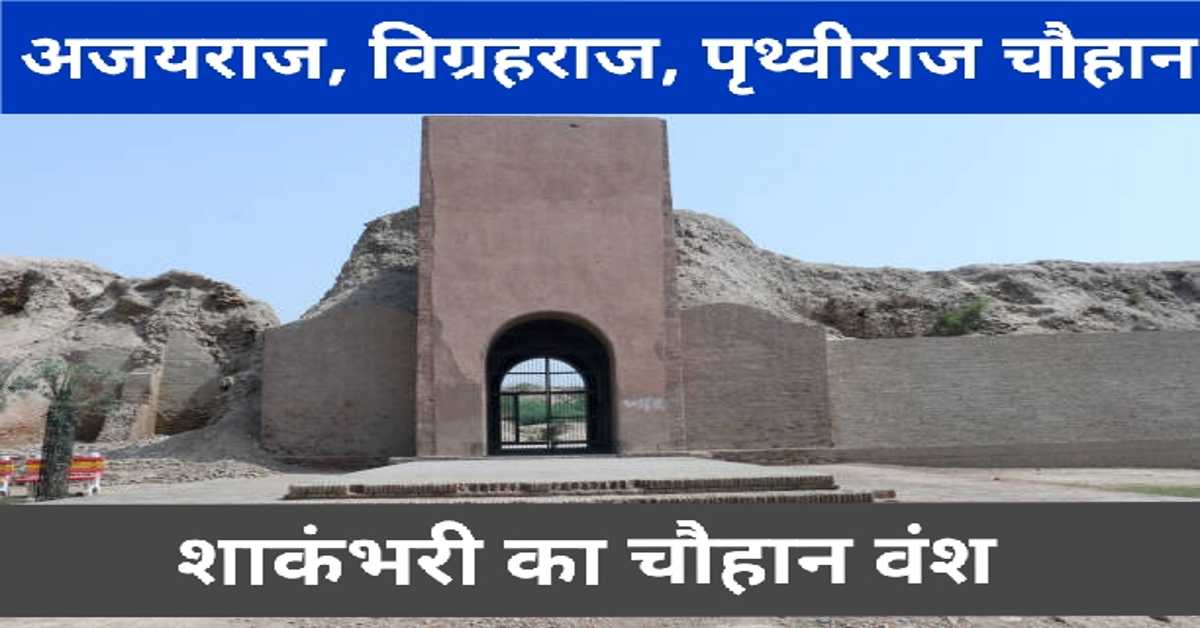
भारतीय इतिहास में सिंधु सभ्यता का स्थान - विश्व की प्रथम चार सभ्यताएँ - मेसोपोटामिया, मिस्र, सिंधु, और चीनी सभ्यता
Place of Indus Civilization in Indian History - First Four Civilizations of the World - Mesopotamia, Egyptian, Indus and Chinese Civilization
1. Mesopotamia Civilization: This civilization developed on the banks of the rivers 'Tigris' and 'Euphratus' . This is the civilization of Arab countries.
2. मिस्र सभ्यता : यह सभ्यता 'नील' नदी के तट पर विकसित हुई थी। नील नदी अफ्रीका महाद्वीप में बहती है।
2. Egyptian Civilization: This civilization developed on the banks of the 'Nile River' . The Nile River flows across the continent of Africa.
3. सिंधु सभ्यता : यह सभ्यता 'सिंधु' नदी के तट पर विकसित हुई थी। यह भारतीय सभ्यता है।
3. Indus Civilization: This civilization was developed on the banks of the 'Indus' River . This is Indian civilization.
4. चीनी सभ्यता : यह सभ्यता 'ह्वांग - हो' नदी (पीली नदी) के तट पर विकसित हुई थी।
4. Chinese Civilization: This civilization was developed on the banks of the 'Hwang-ho' River (Yellow River) .
इन चारों सभ्यताओं की अवधि लगभग वर्तमान से 5000 वर्ष पहले की है। ये सभी सभ्यताएँ बड़ी नदियों की घाटियों पर विकसित हुई थीं। नदियों के पास की भूमि बहुत उपजाऊ थी, क्योंकि यहाँ बाढ़ द्वारा भूमि सिंचित हो जाती थी। अतः अधिक फसलों की प्राप्ति हेतु लोग नदियों के किनारे बसने लगे। यहां की मिट्टी इतनी उपजाऊ थी कि कुछ लोग कृषि कार्य से मुक्त हो जाते थे। कृषि कार्य से मुक्त होने के कारण ये व्यक्ति कुछ विशेष कार्य करने लगे। इन विशेष कार्यों में लेखन, ताम्र उद्योग, मुहर निर्माण, भव्य भवन निर्माण इत्यादि आते हैं।
The period of these four civilizations is approximately 5000 years ago to the present. All these civilizations were developed on the valleys of big rivers. The land near the rivers was very fertile, as the land here was irrigated by floods. Hence, people started settling along the rivers to get more crops. The soil here was so fertile that some people were freed from agricultural work. Due to being free from agricultural work, these people started doing some special work. These special works include writing, copper industry, seal building, grand building construction, etc.
गहन कृषि क्षेत्र से शहरों का विकास होने लगा। पहले कस्बे बने, फिर शहरों का विकास हुआ, और अंत में शहरी सभ्यता दृष्टिगत हुई। चौथी शताब्दी ईसा पूर्व की इन सभ्यताओं की 'शहरी क्रांति' मानव विकास का एक महत्वपूर्ण चरण था। इसका इतिहास में विशेष महत्व है। सर्वप्रथम मेसोपोटामिया सभ्यता में शहरी सभ्यता का विकास हुआ। उसके बाद मिस्त्र एवं सिंधु सभ्यता का विकास हुआ। अंत में चीनी सभ्यता विकसित हुई।
The intensive agriculture sector led to the development of cities. First towns were built, then cities developed, and finally urban civilization was seen. The 'Urban Revolution' of these civilizations of the fourth century BC was an important stage of human development. It has special significance in history. Urban civilization first developed in the Mesopotamia civilization . After that Egypt and Indus civilization developed. Eventually Chinese civilization developed.
'इंडिया' शब्द की उत्पत्ति 'इंडस' (सिंधु) से हुई है। आर्यों ने ईरान से होते हुए भारत की ओर अपनी लंबी यात्रा की। उन्होंने सिंधु जैसी विशाल नदी नहीं देखी थी। उन्होंने इंडस को सिंधु कहा। सिंधु का अर्थ 'पानी की बड़ी झील' होता है। सन् 2825 ईसा पूर्व में पार्शियन सम्राट डेरियस प्रथम ने सिंधु क्षेत्र को जीतकर उसे अपने साम्राज्य का एक प्रांत बना लिया। पार्शियावासी 'स' शब्द का उच्चारण नहीं सकते थे। इसलिए उन्होंने सिंधु को 'हिंदू' कहा। बाद में ग्रीको ने सिंधु क्षेत्र को इंडस कहा। ग्रीको एवं रोमवासियों में सिंधु क्षेत्र को इंडस का पर्यायवाची बना दिया। सिंधु क्षेत्र पर अरब विजय के पश्चात हिंदू से हिंदुस्तान शब्द की उत्पत्ति हुई। वहाँ के वासी हिंदू और धर्म हिंदूइज़्म कहलाया। आतः इंडिया नाम सिंधु सभ्यता के समय से ही प्रचलित है।
The word 'India' has its origin from 'Indus' (Indus) . The Aryans made their long journey through Iran to India. He did not see the giant river like Indus . He called Indus the Indus. Indus means 'large lake of water' . In 2825 BC Persian Emperor Darius I conquered the Indus region and made it a province of his empire. Persians could not pronounce the word 's' . He therefore called Sindhu 'Hindu' . Greco later called the Indus region Indus. In the Greco and Romans, the Indus region became synonymous with Indus. The term Hindu originated from the term Hindustan after the Arab conquest of the Indus region. The residents there were called Hindus and religions Hinduism . Hence the name India has been in vogue since the time of the Indus civilization.
बीसवीं शताब्दी के तीसरे दशक तक सिंधु सभ्यता के बारे में कोई विशेष जानकारी नहीं थी। सन् 1922 में हड़प्पा एवं मोहनजोदड़ो नगरों की खोज हुई। शुरुआत में इसे 'सिंधु घाटी की सभ्यता' कहा गया। किंतु बाद में इस प्रकार के और भी कई नगरों की खोज हुई जिससे इसका क्षेत्र विस्तृत होता गया। अतः इसे 'सिंधु सभ्यता' कहा जाने लगा। सिंधु सभ्यता का प्रथम नगर 'हड़प्पा' था, अतः इसके नाम पर इसे 'हड़प्पा सभ्यता' भी कहा जाता है। फ्रांसीसी पुरातत्व शास्त्रियों 'जीन फ्राकोयस जैंरिज' और 'रिचर्ड मिजो' द्वारा बलूचिस्तान (वर्तमान पाकिस्तान) के 'मेहरगढ़' की खोज हुई। मेहरगढ़ में पुरानी बस्तियों के अवशेषों की श्रंखला प्राप्त हुई। इस श्रंखला से अनाज उत्पादन, पशु पालन, हस्तकला, वास्तुकला और विचारों के क्षेत्र में विकास की पूरी प्रक्रिया साफ नजर आती है। सिंधु सभ्यता के विकास की प्रक्रिया इसके द्वारा समझी जा सकती है।
Until the third decade of the twentieth century there was no specific information about the Indus civilization. In 1922 the cities of Harappa and Mohenjodaro were discovered. Initially it was called 'Indus Valley Civilization' . But later many more cities of this type were discovered, which expanded its area. Hence it came to be known as 'Indus Civilization' . The first city of the Indus civilization was 'Harappa' , hence it is also called 'Harappan civilization' in its name. 'Mehrgarh' of Baluchistan (present-day Pakistan) by French archaeologists 'Jean Fracois Janeridge' and 'Richard Mizo' > Was discovered. A series of remains of old settlements were found in Mehargarh. From this series, the whole process of development in the fields of grain production, animal husbandry, handicraft, architecture and ideas is clearly visible. The process of development of the Indus civilization can be understood by it.
सन 1922 में सिंधु सभ्यता की खोज के पश्चात यह भारतीय पुरातत्व एवं इतिहास की खोज का एक महत्वपूर्ण विषय बन गया है। इस सभ्यता का विस्तार अफगानिस्तान में शोर्तुघई से दक्षिणी गुजरात तक एवं मकरान तट पर सुत्कांगेडोर से लेकर आलमगीरपुर तक है। इसका आकार वर्तमान पाकिस्तान से बड़ा एवं इसके स्थल 5,00,000 वर्ग मील क्षेत्र में फैले थे। सिंधु सभ्यता की तिथियों को लेकर विद्वानों के मध्य मतभेद है। किंतु यहां की सांस्कृतिक परिपक्वता व एकरूपता, समृद्धि कृषि, विविधीकरण, कला, व्यापक वाणिज्यिक संपर्क, एकरूप लिपि, धार्मिक विश्वास व कर्मकांड को लेकर कोई विवाद नहीं है। इन विषयों पर सभी विद्वानों का मत एक है। हड़प्पा की लिपि को पढ़ा जाना अभी शेष है। सिंधु सभ्यता भारतीय उपमहाद्वीप में शहरीकरण का प्रथम चरण था। सिंधु सभ्यता के प्रमुख शहरी केंद्र व छोटे नगर हड़प्पा, मोहनजोदड़ो, लोथल, कालीबंगा, धौलावीरा आदि हैं।
After the discovery of the Indus civilization in 1922 , it has become an important subject of the discovery of Indian archeology and history. The civilization extends from Shortughai to southern Gujarat in Afghanistan and from Sutkangador to Alamgirpur on the Makran coast. Its size was larger than present-day Pakistan and its sites were spread over an area of 5,00,000 square miles . There is a difference of opinion among scholars regarding the dates of the Indus civilization. But there is no dispute about cultural maturity and uniformity, prosperity agriculture, diversification, art, extensive commercial contact, uniform script, religious belief and rituals. All scholars have the same opinion on these subjects. Harappan script is yet to be read. The Indus civilization was the first phase of urbanization in the Indian subcontinent. The major urban centers and small towns of the Indus civilization are Harappa, Mohenjodaro, Lothal, Kalibanga, Dhaulavira etc.
ग्रामीण अर्थव्यवस्था की शुरुआत से हड़प्पा सभ्यता की दहलीज तक भारतीय पुरातत्व में सतत् अनुक्रम है। यह मेहरगढ़, सिंध एवं बलूचिस्तान से प्राप्त विभिन्न कारकों के अध्ययन से स्पष्ट हो जाता है। राजनीतिक संगठन के अभाव में शहरीकरण नहीं हो सकता। चूंकि हड़प्पा एक शहरी सभ्यता थी। अतः यहां पर राजनीतिक संगठन एवं शासकों का अस्तित्व रहा होगा। हड़प्पा की लाक्षणिक विशेषताएँ थी। सभ्यता के आमरी, कोटदीजी, सोथी संस्कृतियों के बीच समानता थी। समाजों के बीच गहन अंतः क्रिया होती थी। धीरे-धीरे राजनीतिक नियंत्रण में वृद्धि हो रही थी। मानचित्रो में स्थलों का विस्तार हो रहा था। घरेलू शिल्पाकृतियों व ग्रामीण तकनीकों में निरंतरता बनी हुई थी। सभ्यता से प्राप्त अवशेषों के अध्ययन से एक समुदाय पर राजनीतिक संस्थाओं के आरोपण की जानकारी मिलती है। धीरे-धीरे सभ्यता शहरीकरण की ओर बढ़ रही थी। इन परिवर्तनों में पाषाण पर निर्भरता कम, चमकदार पाषाण औजारों के संग्रहों का मानकीकरण, तांबे व कास्य के औजारों पर बढ़ती हुई व्यापक निर्भरता आदि शामिल हैं।
There is a continuous sequence in Indian archeology from the beginning of the rural economy to the threshold of the Harappan civilization. This is evident from the study of various factors derived from Mehergarh, Sindh and Balochistan . Urbanization cannot happen in the absence of political organization. Since Harappa was an urban civilization. Therefore, political organizations and rulers must have existed here. Harappan had its characteristic features. There was similarity between the Amari, Kotdiji, Sothi cultures of civilization. There was intense interaction between societies. Gradually political control was increasing. Landmarks were expanding in Manchitro. There was a continuity in domestic sculptures and rural techniques. The study of the remains obtained from civilization gives information about the imposition of political institutions on a community. Gradually civilization was moving towards urbanization. These changes include reduced dependence on stone, standardization of collections of shiny stone tools, increased widespread dependence on copper and bronze tools, etc.
सिंधु सभ्यता की लिपि का कूट वाचन, मुहरों तथा मुद्रांकन, किसी स्थल को परिपक्व हड़प्पा काल के साथ जोड़ने हेतु माप-दंड आदि की स्पष्ट जानकारी उपलब्ध नहीं है। हड़प्पा से कुछ विशेषीकृत वस्तुएँ प्राप्त हुई हैं। इनमें से प्रमुख शिल्पाकृतियों की श्रंखला है। शिल्पाकृतियों की श्रंखला के अंतर्गत मृदभांड का विशेष प्रकार, धात्विक औजारों की सीमित श्रंखला, विशिष्ट आकार व अनुपातों की ईटें, बैलगाड़ी व पहिए के साक्ष्य, लंबे चकमकी बाट, चकमक फलक, मृण्मूर्तियाँ, अभिलेखित मुद्रा के विशिष्ट प्रकार आदि शामिल है। इन वस्तुओं का वितरण असमान है।
The script of Indus Civilization has no clear information about code reading, seals and stamping, metering, etc. to connect a place with the mature Harappan period. Some specialized items have been obtained from Harappa. Chief among these is a series of sculptures. Special types of pottery under a series of sculptures, limited range of metallic tools, bricks of specific sizes and proportions, bullock carts and wheel evidence, long flint weights, flint panes, terracotta, typical types of recorded currency Etc. The distribution of these items is uneven.
सन् 1750 से 1500 ईसा पूर्व के मध्य सिंधु सभ्यता की बस्तियाँ उजड़ने लगी एवं उसका पतन होने लगा। सिंधु सभ्यता के पतन का कारण ज्ञात नहीं है। किंतु इसके संभावित कारण बाढ़ की विभीषिका, समुद्री स्तर का नीचा होना, निर्वनीकरण, विवर्तनिक विक्षोभ, सूखा, आर्यों का आक्रमण इत्यादि है।
Between 1750 and 1500 BC settlements of the Indus civilization started to collapse and fall. The reason for the decline of the Indus civilization is not known. But its possible reasons are flood rains, sea level degeneration, deforestation, tectonic disturbance, drought, invasion of Aryans, etc.
RF competition
INFOSRF.COM
संबंधित जानकारी नीचे देखें।
(Watch related information below) 👇🏻

आशा है, उपरोक्त जानकारी उपयोगी एवं महत्वपूर्ण होगी।
(I hope the above information will be useful and important. )
Thank you.
लेखक
(Writer)
infosrf.com


.jpg)





